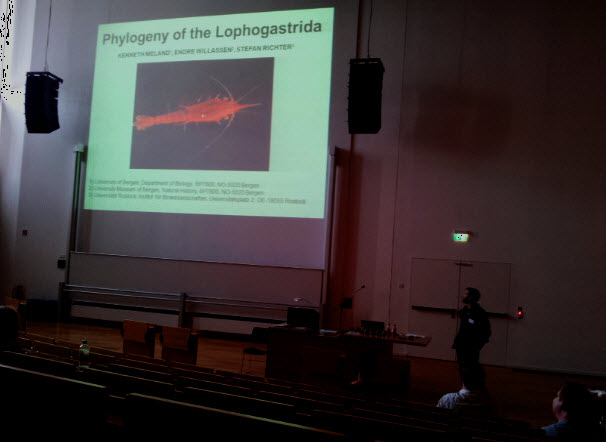This last week Ania and Anne Helene have been filling the lab with details about antennae, epimeral plates and hairs (setae) on all appendages imaginable and unimaginable. The first dive into the west-African amphipods has been made, and we chose to focus on a family that is easily distinguished from the rest of the amphipoda: the Phoxocephalidae.
This family was first described by G.O. Sars in 1891, and in the northern Atlantic it is a friendly group to examine – it does not have too many species. On a world-basis, however, there are 369 species of Phoxocephalide described, within 80 genera (as of dec 14 2015). The whole groups is easily recognized by their “pointed hoods” – the head is drawn forwards just like a hood that is pulled as far to the front as it goes.
Ania has much of her previous experience from the Antarctic and Anne Helene has worked in the Arctic, so west-African waters seemed a good place to meet – if not literally then thematically. Being physically in the same lab is probably the best way to collaborate on examining small animals, and we had a week of long and happy days in the lab.
Why did we think the Phoxocephalidae would be a good starting point for examining the amphipod-fauna of the West-African waters? There were moments during the last week we asked ourselves this question. There are some reasons, though. To be able to identify species of amphipods you normally have to examine a collection of characters such as the antennae, sections of the different legs (Amphipods do have a lot of legs!) and the different sideplates (for example the epimeral plates).
In difference with many other amphipod groups the Phoxocephalids do not have a lot of appendages that are sticking far out of the main body, so there are not so many pieces that break off ethanol-preserved specimens – and that gives us a bit easier job.
But there are not many studies of the smaller crustaceans from these waters previously, so we were not expecting to be able to put names on much of what we were looking at. This prediction proved true – we have found one already named species (Basuto stimpsoni Stebbing, 1908) in all our samples. In addition to this we have found what we think are 27 other species – but we do not have a name for most of them. For many we don´t even have a genus name.
How will we continue with this group? The first step is to see if our 28 putative species really are different – for this we will first map their DNA barcode (COI). Depending on what results this gives us, we will be able to see how many new species we end up with.
There is definitely more to come from this study, and we promise to write about it when we know more (that will, however, not be in this advent calendar)…
-Ania and Anne Helene



























